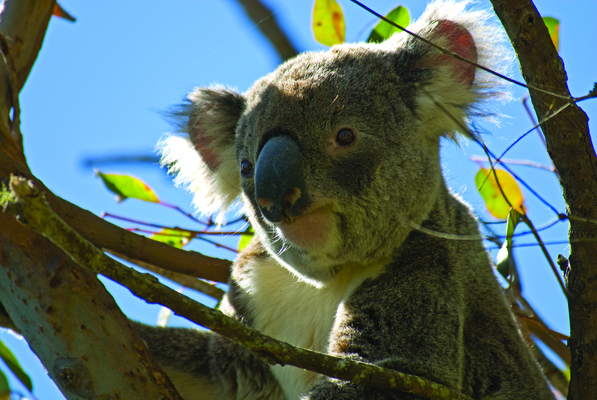
The future of Noosa’s koala population is looking a little brighter as the first part of the Richard Branson Koala Conservancy program kicks off in Noosa.
Noosa Council environment officer Tyron de Kauwe said the council is assisting Endeavour Veterinary Ecology (EVE) and University of the Sunshine Coast (USC) scientists on a pilot project that is tagging and monitoring koalas in Noosa shire.
“This is the initial project of the Richard Branson Koala Conservancy,” he said.
“EVE and USC have worked successfully with the Queensland Government on another successful koala project using these same methods.”
The project captures koalas and gives them a comprehensive health assessment.
If they are unwell they are treated and if they are healthy then they are fitted with a collar, and quickly released back into their habitat.
These project koalas will also be the beneficiaries of the koala chlamydia vaccine which was developed by the University of the Sunshine Coast.
The collars have a GPS tracking device that shows koala movements and relays that information back to EVE electronically.
“EVE can see when a koala slows down or stops. This information helps indicate whether the koala may be injured or unwell and helps identify where there are threats to koala movement or wellbeing,” Mr de Kauwe said.
The council is also assisting a range of scientists and conservation agencies with other programs in a quest to conserve Noosa’s koala population with a number of projects underway simultaneously across the shire.
The council has also been working with USC and its koala tracking dog program.
This program has been very successful in finding local koalas through scat detection.
Genetic and health analysis is being carried out on the collected scat under a project part-funded by the Noosa Biosphere Reserve Foundation.
Mayor Tony Wellington said koala conservation is not a simple matter and knowing where koalas live and whether they are healthy all plays a role in their survival.
“It’s vital to understand exactly where our local koalas are living, whether they represent healthy and viable populations and, otherwise, what management interventions are required to make these koala populations sustainable,” he said.
“To achieve a turnaround in koala numbers, and that is our goal, we do need to carry out these sorts of complementary scientific studies, with some urgency attached.”
Koala sightings reported to the council are sent through to the USC program. Sightings also help to inform the council’s new planning scheme.
In addition, the council has engaged o2Ecology to locate koala hot spots where koalas come into regular contact with the human environment.
This work will help the council identify where investment in infrastructure is required to help koalas move around safely.
The local Queensland Koala Crusader (QKC) group has also been busy assisting with a range of conservation and care projects for the Noosa koala population.
President Meghan Halverson said the group will “redouble” its efforts in 2017 and was determined to focus its energies on “developing sanctuary creation strategies”.
“Collaborative efforts are underway and we have had some exciting moments in 2016 that will continue into 2017,” she said.
“We planted trees for a koala food tree plantation at Wildlife HQ on 27 September in conjunction with Noosa District Land care.
“The newly planted trees will provide a support to local koala rescuers and carers in the Sunshine Coast and Noosa region.
“We plan to participate in more of these kinds of collaborative efforts to establish more re-growth plantations and corridor connectivity,” she said.
The council’s projects are consistent with its Koala Conservation Plan, which was adopted in 2016.
For more information about Noosa Shire Council’s Koala Conservation Plan or to help the council with koala sightings information visit www.noosa.qld.gov.au/koalas.






